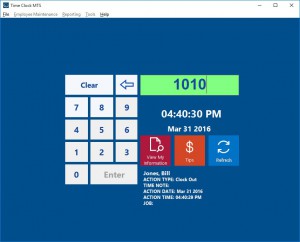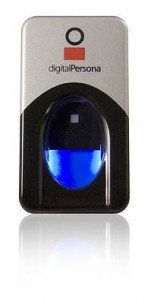What is the best time clock software for your business? In this article I’ll take a look at five key points you should consider before making this decision.
1. Ease of Employee Use
Any good timeclock software is designed to simplify what is the unavoidable task of collecting and reporting on employee time and attendance. To actually simplify this task the time clock software must be easy to learn, and easy to use. This ease of use must cover the two key functions of the software.
Firstly, it is critical that the what is needed for an employee to clock in or out is both easy to understand and quick to perform, ideally taking no more than a second or two. Even an extra 10 seconds taken to clock in or out adds up to a rather remarkable 80 minutes of lost time in a calendar year per employee. If you’ve got 20 employees these numbers can really start adding up.
Secondly, the best time clock software for your business must be easy for your administrative and payroll personnel to use. It’s in this area of operation that real savings can be made with quick reporting, automatic overtime and accrual calculations, and flexible payroll reports. If all of these benefits are offset by software that is hard to use, difficult to understand, and slow to operate then you must question if the timeclock software you’re looking at is the best one for your business.
2. Low Cost of Ownership
The cost of implementing employee attendance software for your business comes in two stages. Firstly, the actual cash dollar amount to purchase the time clock system and the time expended implementing the new system. Secondly, the on-going cash cost of keeping your software running and the internal administrative time spent doing the same. Clearly, a balance must be struck, software that is cheap to purchase but difficult to implement and time consuming to maintain can work out to be much more expensive in the long term. Conversely, some software can be more expensive to purchase up-front but be simple to implement and just keeps doing it’s job without any work on your behalf. I’d suggest constructing some sort of costing spreadsheet to compare the up-front versus on-going costs of the time clock software you’re considering before making a decision on the best solution to you.
3. On-Going Support
I’ve been writing and selling timeclock applications for a decade now and the one thing I can assure you of is that you *will* use the technical support resources for your software at least once. It’s important that the time clock software you decide is best for your company has extensive online support resources AND a live person you can contact by phone or email. Without these resources you’re going to be in big trouble the day your payroll person quits and no-one else in your company knows your time clock software password.
4. Established History
I always consider how long a software vendor has been in operation before purchasing software for my business. The same consideration should be made by anyone trying to find the best time clock software for them. There’s a few reasons for this. The first is to ensure that when you need help with your software that there’s still a company around to help you out. Secondly, a more mature software product is likely to have a lot less bugs and a lot more features and flexibility to ensure that your chosen product really is the best time clock software for you. Finally, an established company is likely to have hundreds or even thousands of customers and they’ll be going out of their way to keep those companies happy with better support services and on-going software development. Choosing a product from such a company is likely to give you much better value for money in the long term.
5. Flexibility of Interface Options
It’s a fairly automatic assumption by the authors of some timeclock systems that employees will clock in and out using a keyboard and mouse. It turns out this isn’t the case at all. Careful consideration should be given to ensure that your chosen time clock solution can cater for some or all of the following interface options:
- Use of a fingerprint scanner
- Suitable for use with a touchscreen
- Able to accept ASCII data from different devices such as barcode scanners, magnetic card readers, prox cards, or RFID readers.
Conclusions
If you’re trying to determine what is the best time clock software for your business I hope that you’ll consider the five points above. Each of them should allow you to create a software shortlist very quickly and set you on the path of using a new system that should result in your business saving both time and money. Of course I’d love it if you considered Time Clock MTS.


